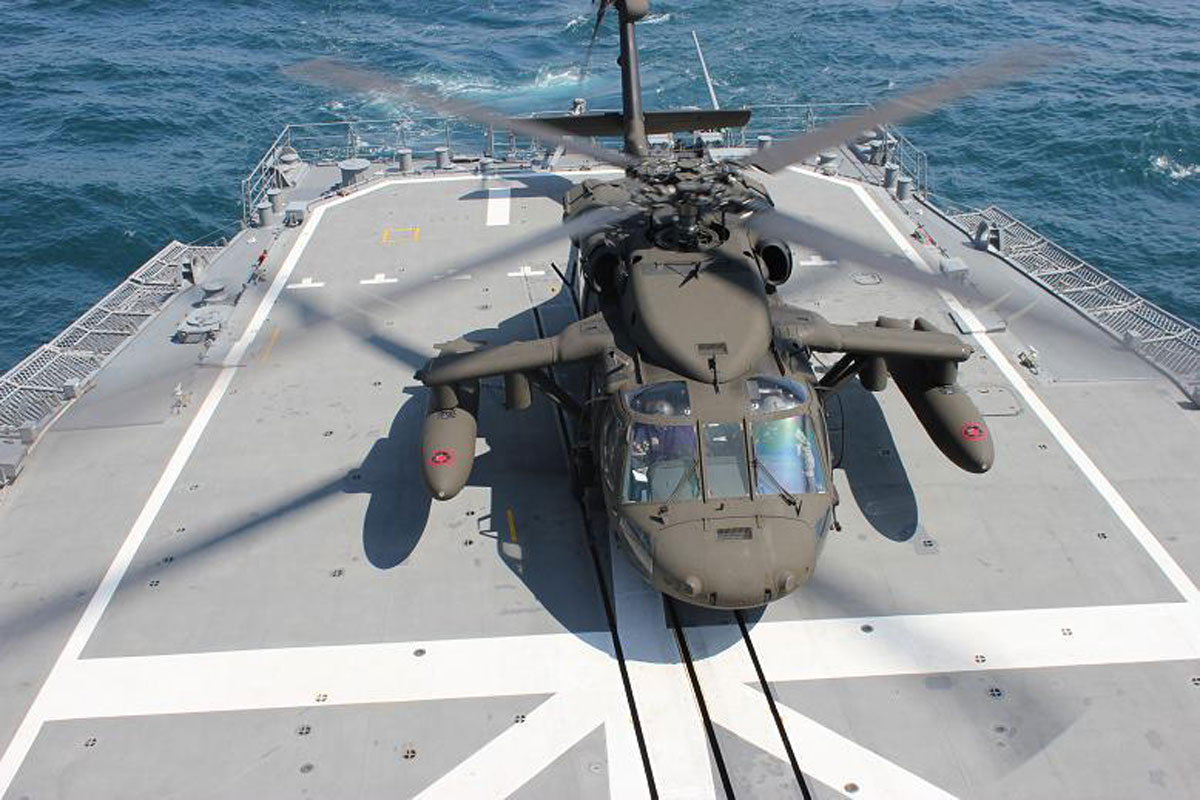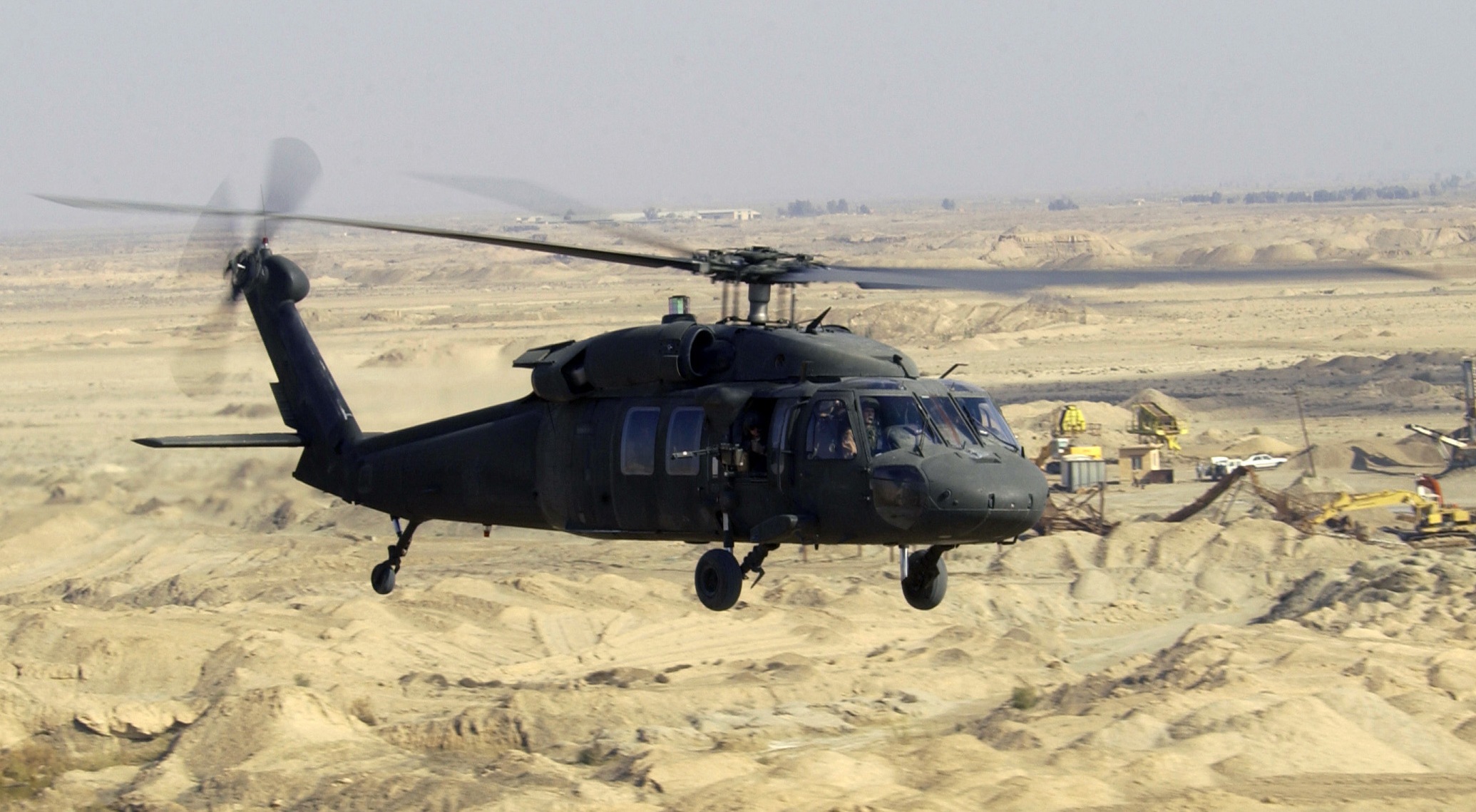Important Facts and Insights Concerning the UH-60 Helicopter
The UH-60 helicopter, a cornerstone of modern military aeronautics, has actually advanced dramatically given that its intro in 1979. Recognizing the ins and outs of the UH-60's function exposes a complex story of technology and adjustment that values additionally exploration.
History of the UH-60
The UH-60 Black Hawk helicopter was created in the late 1970s as component of the United States Army's campaign to change the older UH-1 Iroquois. The requirement for a more functional, sturdy, and qualified aircraft arose from the lessons found out throughout the Vietnam War, where the limitations of the UH-1 came to be evident. In 1972, the Army launched a program to obtain a new energy helicopter, culminating in a competitive layout phase that saw several suppliers submit proposals.
Sikorsky Airplane was eventually awarded the contract in 1976, and the initial prototype of the Black Hawk took flight in 1974. Its design concentrated on sophisticated technology, consisting of a four-blade blades system and a modular construction that permitted for rapid field upkeep and adaptability to different missions. Formally entering solution in 1979, the UH-60 quickly became the foundation of Army air travel, serving in a wide variety of roles such as army transport, medevac, and logistical support.
For many years, the Black Hawk has undertaken various upgrades and adjustments, strengthening its standing as a vital property in military procedures around the world (UH 60). Its robust performance proceeds to meet the progressing needs of modern warfare
Layout and Features
Integrating sophisticated design concepts, the UH-60 Black Hawk includes a streamlined, wind resistant design that enhances its performance and efficiency. This twin-engine utility helicopter is defined by its distinct shape, with a high-mounted, four-blade main rotor system that provides phenomenal lift and security. The rotor blades are constructed from composite materials, adding to their durability and minimizing upkeep demands.
The body is made for optimal weight circulation and architectural integrity, allowing for a maximum gross weight of roughly 22,000 pounds. The cabin design helps with versatile configurations, fitting different missions, from troop transport to medevac procedures. In addition, the cabin is furnished with sophisticated avionics, including digital display screens and multi-functional systems that boost situational understanding.
The UH-60 additionally integrates composite products in its airframe, which minimize radar cross-section and enhance survivability in hostile settings. Its retracting landing gear simplifies the airplane's profile, further adding to its wind resistant effectiveness. Overall, the thoughtful assimilation of style elements and products not only improves the Black Hawk's functional abilities but additionally makes sure that it stays a vital property for objectives across varied surfaces and conditions.
Functional Abilities


The UH-60 is geared up with advanced avionics and navigation systems, facilitating procedures in tough YOURURL.com climate problems and low visibility scenarios. Its durable layout enables it to carry out in extreme and high-altitude temperature level conditions, even more extending its functional array. The helicopter's twin-engine arrangement supplies redundancy and improved performance, making sure dependability during crucial missions.
Geared up with advanced communication systems, the Black Hawk enhances situational understanding and control among military devices. Furthermore, its capacity to carry out aerial reconnaissance and assistance close air support objectives underscores its integral function on the battlefield. On the whole, the UH-60 Black Hawk's operational capacities are a testament to its value in contemporary army air travel, properly satisfying the needs of a rapidly progressing operational landscape.

Modifications and variants
Numerous versions and adjustments of the UH-60 Black Hawk have been developed to fulfill details goal demands and improve its operational versatility. The most remarkable version is the UH-60L, which presented upgraded engines, improved avionics, and boosted freight capability. Furthermore, the UH-60M variant attributes progressed digital avionics, a more effective engine, and enhanced survivability systems, making it appropriate for a larger array of goals.
The HH-60G Lead Hawk is one more specialized variation, designed for search and rescue procedures. It is furnished with sophisticated navigation systems, external gas storage tanks, and medical emptying capabilities. The MH-60R Seahawk is maximized for anti-submarine warfare and maritime operations, flaunting advanced radar and sonar systems.
In addition, the armed versions, such as the AH-60, are customized for straight assault roles, including weapon systems like rockets you could look here and gatling gun. The UH-60's adaptability is more showcased in its ability to be fitted with mission-specific equipment, including freight hooks for transportation, army transport interiors, and reconnaissance sensing units.
These variants and alterations underscore the Black Hawk's essential function in modern armed forces procedures, showcasing its capability to adapt to evolving objective needs.
Role in Good Samaritan Initiatives
The UH-60 Black Hawk has tipped up to play an important duty in humanitarian efforts around the world, showing its flexibility past military applications. This multi-mission helicopter is furnished to perform a variety of objectives, consisting of clinical evacuations, disaster relief, and logistical support in difficult settings.
During natural catastrophes, such as storms and quakes, the Black Hawk has verified invaluable for carrying alleviation products and employees to affected areas. Its ability to operate in austere problems enables it to get to remote areas that might be hard to reach by ground transportation, making sure prompt help to those in demand.
Additionally, the UH-60 is commonly made use of for medical evacuation goals, promptly transporting injured people to clinical centers. Its advanced medical capacities, consisting of room for medical personnel and equipment, allow life-saving treatments during crucial circumstances.
In worldwide procedures, the Black Hawk regularly teams up with altruistic companies, showcasing its adaptability and dependability. By leveraging its capabilities, the UH-60 not only supports army goals however likewise plays a necessary duty in relieving and conserving lives suffering throughout altruistic situations worldwide.
Final Thought
The UH-60 helicopter has actually developed itself as an essential possession in army procedures because its intro, defined by its robust layout and flexible capabilities. Its numerous setups accommodate a vast variety of missions, from troop transport to clinical evacuation. The UH-60's contributions prolong beyond battle, playing a significant duty in humanitarian initiatives worldwide. The ongoing advancement of this aircraft emphasizes its significance in modern-day aviation and its flexibility to meet varied operational needs.
The UH-60 Black Hawk helicopter was established in the late 1970s as component of the United States Military's initiative to replace the older UH-1 Iroquois.Including advanced engineering concepts, the UH-60 Black Hawk features a smooth, wind resistant design that improves its efficiency and efficiency.Enhanced layout and advanced engineering allow the UH-60 Black Hawk to stand out in a selection of operational duties. In general, the UH-60 Black Hawk's functional capacities are a testimony to its importance in contemporary military aeronautics, efficiently satisfying the needs of a rapidly developing functional landscape.
Different variations and adjustments of the UH-60 Black Hawk have actually been useful source established to satisfy certain goal demands and improve its functional adaptability.